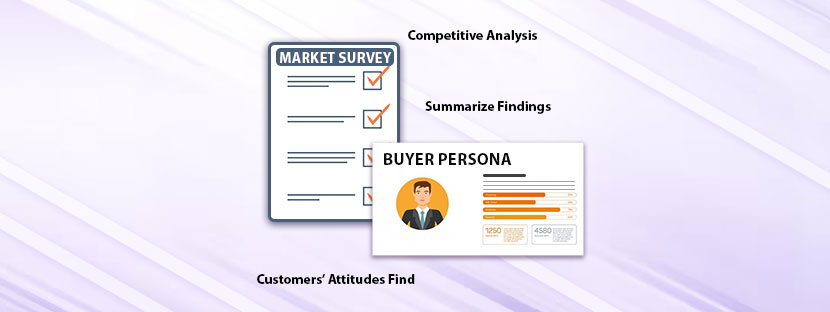Do you want to kick-start your email marketing process to acquire new customers faster? Well, congratulations then! Emails are the most powerful yet effective measure to gain new customers at this current time. Did you find a way to manage your email lists? Or do you need professional services for this purpose?
To make your email marketing campaigns smooth, you need to strengthen your email appending process. Yes, this process is one of the finest and most accurate measures to manage customers’ email lists. Email marketing is gaining success at present with due measures as businesses are using it to convert customers. Hence, it’s high time for your businesses to take email as a weapon to gain victory over digital marketing campaigns.
Can you guess the number of email users? Well, it has become 4.4 billion in 2023, which has increased by 4 million in the last three years. Therefore, this figure shows that email marketing is still a good option to gain more audience. However, for a business, it’s very crucial to have a proper list of valid email addresses. With this, a business can gain success in its email marketing best practices along with campaigns.
So, how would businesses manage a huge number of email addresses in a timely fashion? To answer your question, this blog is specially crafted with relevant information. The more you read, the more you’ll explore the field of appending emails, which can help you in managing emails.
Let’s explore it from scratch!
A. Explaining What is Email Appending
The process of appending emails has a special name, which is e-appending, this is a popular name in digital marketing. E-appending is generally a marketing practice to cross-check and verify email addresses. Hence, this process ensures the accuracy of the email and helps to find missing data.
As emails are the most effective communication tool thus businesses store customers’ emails for direct communication. Once you set your email, you’ll grab the chance to send your customers personalized emails regarding offers and promotions. Here, the e-appending process will help you to combine all emails in one place.
FYI, the term “appending” in English is another word for adding. Similarly, email appending is a process of adding valid email addresses to the email list or just updating the email list. Through this process, businesses will acquire new email addresses to the database and make updates. Hence, this email append process immensely helps marketing and sales firms by providing them with enough data.
B. Challenges Associated with Unsorted Emails
Email addresses are only viable to business organizations if they help businesses to convey their messages. However, due to inaccurate measures, companies lose almost 22.5% of email data each year. The data becomes obsolete for many reasons, and the inactivation of email is one among them. Thus, businesses majorly rely on accurate email data management processes for updating the list.
A business can lose valuable and deliverable email addresses for several reasons; some of these are;
1. Online-Offline Transfers
Many businesses are there that overly rely on offline data management procedures for security purposes. Therefore, they constantly switch online to offline and vice versa for their needs. During the process, there’s a high chance of writing inaccurate data on the paper. Later on, when businesses use that paper to record data, it would automatically record the wrong data.
2. Inaccuracy During Typing
Well, the process of email appending is strict as a small mistake in the email address can harm the marketing efforts. However, typing mistakes are one of such unavoidable mistakes that will appear anyhow. Businesses can only eliminate these errors if they outsource the Appending Email Service here.
3. Discontinuation of Emails by Users
Suppose you have acquired a genuine customer who responds to your emails via various activities. After a while, that person stopped using that email ID because of personal choices. However, if you’re still sending newsletters or offers to that person that means you’re simply wasting your time.
Hence, not removing the email IDs that users have discontinued is a bad practice here. However, identifying the discontinued email IDs itself is a challenge, which companies often face.
4. Not updating the Alternate Emails
What happens when a user stops using an email? The simple answer is that the user may be using another email ID to access all the resources. Hence, in the process of email appending, you have to include new and alternative email IDs of the new users. Therefore, businesses can send promotional emails to the alternative IDs appropriately besides implementing the email marketing best practices.
5. Unsubscribed Members
Due to data protection regulations, consumers have the right to unsubscribe emails. Therefore, businesses have the responsibility to club those emails that opt for unsubscribe options. Without a continuous update, businesses may face difficulties in recording those emails together under one category.
6. Blocking by Customers’ Server
Sometimes customers use strong servers that automatically block coming up new emails. Also, customers add filters to their inboxes to avoid reading promotional emails. Amid that, if businesses still choose to send emails to these users then it would create a loss here. Therefore, not updating the email listing by phasing out these emails is a challenge here.
C. How does Email Appending Sort Emails?
Before you initiate the appending process, you must have a set of email addresses with you. Therefore, you have to gather all the email addresses from the available customers’ data. Businesses currently have a variety of options to choose from for entering email data records. Most businesses choose customer surveys and public records for finding customers’ valid email IDs.
1. Sorting and Cleaning
Businesses collect email data from a vast pool of data sources, which itself is a challenging process. To send promotional emails, businesses must have proper emails, that customers currently use. Therefore, throughout the process, the data entry experts have to ensure that the emails are correct and error-free.
Soring and cleaning is one of the integral processes of email appending where email data gets updated. Throughout these processes, bad data gets cleaned and new data gets replaced with the old data. For instance, a special character in an email ID is bad data. Because you cannot send emails to an invalid mail and thus you have to phase out these IDs from the database. With proper sorting and cleaning, you can manage the email list better.
2. Matching Records
Checking the reliability of the email data is a need in the email listing process. To gain reliability, checking the email ID with social media profiles is necessary. Those email IDs will be recorded in the email statistics database that has reliable social media profiles. Besides social media, businesses also can check public records to match the email ID for validation.
While matching the records, you need to check that the name column and email address match together. If you notice some differences then you need to report it and make appropriate corrections there.
3. Sending Emails
After matching the email IDs, you need to start the next process, which is sending emails. Note that, you need to implement an email appending process with the highest form of data security. Therefore, after sending emails, observe how many customers choose to opt out of receiving your emails. Therefore, by following the security measures, you must delete their email ID from your email marketing databases.
4. Response Monitoring
Initiate a close monitoring process after sending emails to your customers by following the email data that you have gathered. Monitoring the performance will ensure whether your strategies are working nicely or not. Therefore, you can change your approach if you feel like to change it. Otherwise, if you see everything goes well, then you can continue with your approach.
Read our post: How To Build An Email List From Scratch
D. About the Appending Process
The basics of the email append process start from the selection of the customer database. Yes, first of all, you need an organized database consisting of customers’ information. This database must include the names, contact numbers, and deliverable email addresses of the customers. Remember that, at this stage, the database can include missing information, which you need to check in the next process.
Therefore, once you have the database you must immediately start the next process, which is cross-checking. In the email appending process, you need to find missing values with the incorporation of sharp measures. Therefore, you need to initiate the data validation process in which you’ll find and eliminate wrong information. Also, you will replenish the blank space in the email database with accurate data.
The main idea behind the appending of emails is to promote business via emails. So, why don’t you consider writing a welcome message? Hence, the next process when you get a clean database is all about writing a welcome message. Writing the message in a warm tone will make an impact and thus you must focus on it.
Nowadays, most businesses are overly dependent on outsourcing services, especially these types of services. If you opt for outsourcing these services then you’ll get all the email data in downloadable format. Simply, all you need to do is download the database and then integrate it with your internal process. Outsourcing companies are better at delivering quality support with an updated email statistics database.
E. Best Practices of Email Appending
No business ever wants to down its IP sender reputation, Right? Therefore, businesses have to take very careful measures while sending emails to customers’ IDs. However, sometimes due to a lack of real-time accurate information, businesses degrade their IP sender reputation. Therefore, following the accurate path is necessary when it comes to appending customers’ mail IDs.
1. Start With Active Customers
To initiate the appending process, it’s always best to choose the existing and active customers. You will target the wider audience later but for the first time, start with your customers. Collect the email IDs of your active customers and send emails to them. Inform them about the services that you’ll offer along with the latest deals via email.
2. Work During Off-Season
As you know you’ll experience a rush in business during the peak season thus preparing for that during the off-season is the best. Therefore, you can efficiently complete the email appending task during off seasons to boost your business during the peak. It always performs the best when you have prepare the list of emails prior to 1 month of peak period.
3. Conduct Regular Updates
As discussed before, some users might stop using the email ID that they have subscribed for. Therefore, when you send emails to these IDs then it would reduce your IP sender reputation. Because inactive users would not respond to your messages at all. Thus, to avoid such a situation, you need to perform regular updates of your email list.
4. Follow Phased Implementation
Imagine, you have sent emails to all the email IDs that were listed in your email marketing databases. Would the situation favor you? No, absolutely not! Sending emails frequently will harm your brand reputation negatively. Therefore, to do it rightly, you need to follow a phased implementation process in which you’ll implement it gradually. Also, it will secure your IP sender’s reputation even after sending emails to your customers.
Lastly, in today’s time, the scope of emails through email marketing best practices has increased and it is capturing a broad area in digital marketing. If you’re thinking of entering this field but wondering how you can it then all you need to do is outsourcing. You can outsource email appending services to do email listing and other important things of email marketing.











